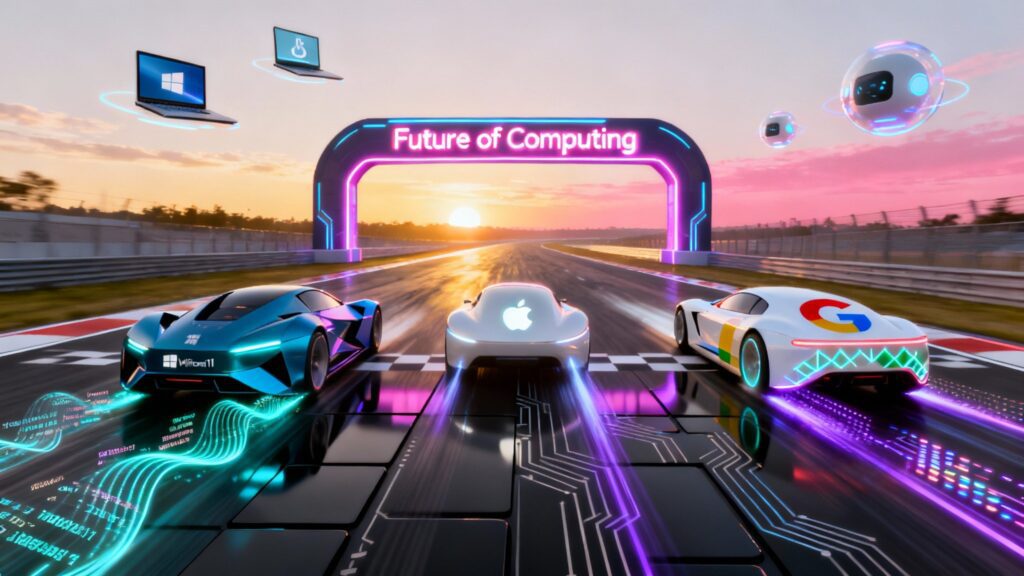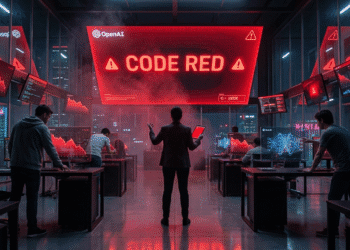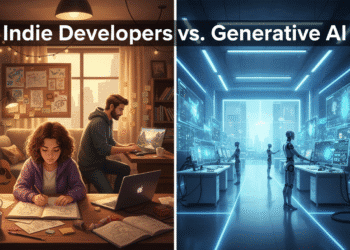Microsoft is making a bold move. The tech giant is rewriting Windows 11 around artificial intelligence, bringing advanced Copilot features to every Windows 11 device not just premium Copilot+ PCs. This shift marks a fundamental change in how we’ll interact with our computers, moving beyond the traditional keyboard and mouse to embrace voice as a primary input method.
The End of Windows 10 Signals a New Beginning
The timing couldn’t be more strategic. As Microsoft officially ended support for Windows 10 on October 14, 2025, the company is rolling out a comprehensive suite of AI features designed to make Windows 11 the definitive AI-powered operating system. It’s a calculated push to encourage the millions of Windows 10 users to upgrade and to experience what Microsoft calls “the computer you can talk to.”
“We really feel that the vision that we have is, let’s rewrite the entire operating system around AI and build essentially what becomes truly the AI PC,” Yusuf Mehdi, Microsoft’s executive vice president and consumer chief marketing officer, told reporters in a briefing. This isn’t just marketing speak. Microsoft is fundamentally rethinking how people interact with their PCs.
“Hey, Copilot!” – Voice Takes Center Stage
At the heart of this transformation is voice interaction. Microsoft is introducing a new “Hey, Copilot!” wake word that allows users to activate the AI assistant hands-free on any Windows 11 PC. This feature, previously limited to Copilot+ devices with dedicated Neural Processing Units (NPUs), is now rolling out to all Windows 11 machines.
“In our minds, voice will now become the third input mechanism to use with your PC,” Mehdi explained. “It doesn’t replace the keyboard and mouse necessarily, but it’s an added thing and it will be pretty profound and a new way to do it.”
The concept isn’t entirely new. Microsoft attempted something similar a decade ago with Cortana on Windows 10, which never gained significant traction. But the company believes that advances in AI technology will finally make talking to your computer feel natural rather than awkward.
Mehdi pointed to data showing that when people use voice with Copilot, they engage with it twice as much as when typing. He also referenced the billions of minutes people spend talking in Microsoft Teams meetings as evidence that users are already comfortable speaking through their computers. “They’re talking through their computers today, and I think this change to ‘talk with and talk to’ will come to reality and we’ll see this thing really take off,” he said.
Copilot Vision: AI That Sees What You See
Voice is only part of the equation. For AI to truly assist users, it needs context and that’s where Copilot Vision comes in. This feature allows Copilot to scan everything on your screen and provide contextual help, whether you’re editing photos, troubleshooting PC problems, learning new tasks, or even getting step-by-step guidance in games.
Unlike the controversial Recall feature that automatically took snapshots of your PC, Copilot Vision is opt-in. Users must explicitly grant permission for the AI to view their screen, similar to sharing your screen in a Teams call. Once activated, Copilot Vision can coach you through using apps, answer questions about photos and documents, and offer real-time assistance.
The feature is now rolling out worldwide in all markets where Copilot is available. Microsoft envisions it as a knowledgeable friend looking over your shoulder, ready to help whenever you need it.
Copilot Actions: When AI Takes Control
Perhaps the most revolutionary and potentially controversial feature is Copilot Actions. This capability allows Microsoft’s AI assistant to actually perform tasks on your PC on your behalf. Think of it as AI agents that can make edits to a folder full of photos, adjust system settings, or organize files based on simple voice commands.
“You should be able to talk to your PC, have it understand you, and then be able to have magic happen from that,” Mehdi said. “With your permission, we want people to be able to share with their AI on Windows what they’re doing and what they’re seeing. The PC should be able to act on your behalf.”
Copilot Actions launches in a separate Windows desktop environment described as “secure and contained.” Users can watch as the AI agent lists all the steps it’s taking to complete a task, and they can stop the process at any time. The feature is initially limited to Windows Insiders through Copilot Labs as Microsoft refines the technology.
Navjot Virk, corporate vice president of Windows Experiences, acknowledged the experimental nature of the feature. “In the beginning you might see the agent make some mistakes, or encounter some challenges when trying to use some really complex applications,” she explained. “We’re absolutely committed to learning from how people use it, and we want to continue to improve the experience to make it more capable and streamlined over time.”
The Copilot+ Question: Does Hardware Still Matter?
Microsoft’s decision to bring these features to all Windows 11 PCs raises an important question: What happens to Copilot+ PCs? For the past two years, Microsoft and its chip partners have heavily promoted devices with NPUs capable of 40 TOPS (trillions of operations per second) or more as the future of computing.
According to PCWorld, Microsoft’s announcement represents a potential reversal of this strategy. The blog post announcing the new features was titled “Making every Windows 11 PC an AI PC,” and notably, the term “Copilot+” appeared only once, while “NPU” didn’t appear at all.
When asked about this shift, Mehdi acknowledged that while Copilot+ PCs remain “the tip of the spear,” the company’s priority is now bringing AI capabilities to all Windows 11 users. “The big thing was, let’s bring that AI capability to all Windows 11 PCs, and make it really simple for anyone to try it,” he said.
This doesn’t mean Copilot+ PCs are obsolete. Certain features, like semantic search and some Zoom integrations, still require the dedicated NPU hardware. But the broader message is clear: Microsoft wants AI to be accessible to everyone, not just those who can afford premium hardware.
Security and Privacy Concerns
After the backlash surrounding the Recall feature last year, Microsoft faces significant challenges in convincing users to trust these new AI capabilities. Copilot Actions, in particular, raises questions about security, privacy, and control.
Microsoft has outlined several safeguards. First, the company is creating separate agent accounts within Windows, distinct from user accounts. These agents start with limited permissions and can only access resources users explicitly allow. Second, all agents must be digitally signed to prevent them from becoming malware. Third, agents operate within a dedicated “workspace” with runtime isolation and granular permissions.
The wake-word detection for “Hey, Copilot!” uses an on-device spotter with a short memory buffer. The system continuously monitors audio locally, and only when it recognizes the phrase does it surface the voice UI and, with user consent, send audio to cloud services.
Despite these precautions, security experts will likely scrutinize the implementation. Questions remain about what happens if files are corrupted or deleted by AI actions, how much data is sent to the cloud, and whether enterprise customers will have sufficient control over these features.
A New Era of Computing or Premature Hype?
Microsoft’s vision is ambitious: a computer that listens, sees, and acts on your behalf. But will users embrace it? History suggests caution. Voice assistants on PCs have struggled to gain mainstream adoption, and many users remain skeptical of AI’s ability to perform complex tasks reliably.
The accessibility benefits are undeniable. For users with motor impairments, robust system-level voice control could be transformative. The ability to control a PC entirely through voice, without custom assistive hardware, opens new possibilities for millions of people.
For productivity users, hands-free workflows could reduce friction in multitasking scenarios dictating notes while cooking, requesting summaries during meetings, or organizing files while on the phone. If Copilot can reliably perform these tasks, it could genuinely change how people work.
The Competitive Landscape
Microsoft isn’t alone in betting on AI-powered computing. Apple has long offered robust desktop voice control and Siri activation on macOS. Google is integrating Gemini into Chromebook experiences. But Microsoft’s approach is distinct in its ambition to make AI a system-level control surface rather than an optional feature.
By tying richer features to a hardware class (Copilot+ PCs) while making core functionality available to all Windows 11 users, Microsoft is attempting to balance accessibility with premium experiences. It’s a delicate strategy that could either accelerate AI adoption or create confusion about what features work on which devices.
What Comes Next
Microsoft is launching a television advertising campaign with the tagline “meet the computer you can talk to,” coinciding with the end of Windows 10 support. The company is clearly betting that this moment when millions of users are considering upgrades—is the right time to introduce a fundamentally different way of interacting with PCs.
The new Copilot features are rolling out gradually. The “Hey, Copilot!” wake word and Copilot Vision are available now to Windows 11 users. Copilot Actions is limited to Windows Insiders through Copilot Labs, with a broader release expected in the coming months.
For IT administrators and enterprise customers, Microsoft recommends starting pilot programs now. Organizations should inventory devices to determine Copilot+ hardware availability, define policies for wake words and cloud audio transmission, and plan auditing and logging for agent actions.
The Bottom Line

Microsoft is making a massive bet that AI will fundamentally change how we use computers. By bringing advanced Copilot features to all Windows 11 devices, the company is democratizing access to AI capabilities that were previously limited to premium hardware.
Whether users will embrace talking to their computers, trusting AI to see their screens, and allowing agents to perform tasks on their behalf remains to be seen. The technology is impressive, but adoption will depend on reliability, security, and whether these features genuinely make computing easier rather than more complicated.
As Windows 10 fades into history, Windows 11 is positioning itself as the AI-first operating system. It’s a bold vision one that could either revolutionize personal computing or become another ambitious Microsoft experiment that users politely ignore. Only time will tell which path it takes.
Sources
- Microsoft wants you to talk to your PC and let AI control it – The Verge
- Every Windows 11 PC is becoming an AI PC. What does that mean for Copilot+? – PCWorld
- Meet Copilot Actions, Windows 11’s most revolutionary AI feature yet – PCWorld
- Microsoft Expands Copilot AI to Every Windows 11 Device – iPhone in Canada
- Windows 11 Update Turns Every PC Into An “AI PC” With Hands-free Copilot – Dataconomy









